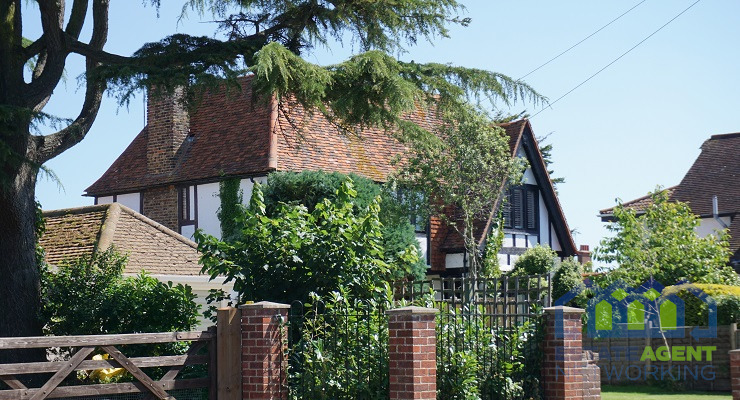Lighting the Way: Illuminating Design Strategies of London Interior Architects
Unveiling the Brilliance of Interior Architecture and Design Mastery
In the vibrant tapestry of London’s architectural landscape, Interior Design Architects emerge as luminaries, casting their creative light on spaces and redefining the way we experience environments. This article delves into the intricacies of lighting design strategies employed by London’s Interior Architects, shedding light on their innovative approaches and how they weave illumination into the very fabric of their designs.
1. The Essence of Interior Architecture: Crafting Spaces with Light
1.1 Interior Architecture as a Luminous Canvas
Interior architecture, at its core, is the art of shaping spaces. In London, Interior Design Architects utilise light as a primary medium on their canvas. The interplay of light and shadow becomes a dynamic element, transforming the perception of spaces and adding layers of depth to architectural designs.
1.2 The Role of Interior Design Architects
Interior Design Architects in London are not merely designers; they are orchestrators of ambience. The strategic use of lighting becomes a crucial tool in their arsenal, allowing them to sculpt spaces, evoke emotions, and guide the user’s journey through the designed environment.
2. Lighting as a Design Element: A Symphony of Illumination
2.1 Beyond Functionality: The Aesthetic Dance of Light
Lighting transcends its utilitarian role, becoming an integral part of the design language. London’s Interior Architects masterfully blend functionality with aesthetics, using light fixtures as sculptural elements that enhance the overall visual appeal of a space. From pendant lights that descend like art installations to ambient LED strips tracing architectural contours, each choice is deliberate.
2.2 Spatial Enhancement Through Varied Lighting Techniques
London Interior Architects employ an array of lighting techniques to enhance spatial qualities. Ambient lighting provides overall illumination, task lighting focuses on specific functional areas, and accent lighting creates focal points, drawing attention to architectural features or design elements. The deliberate orchestration of these techniques defines the character of the space.
3. Lighting Strategies in Residential Haven: A Closer Look
3.1 Tailoring Light to Domestic Sanctuaries
In the realm of residential design, Interior Architects in London customise lighting to create inviting and comfortable havens. Warm ambient lighting in living areas promotes relaxation, while focused task lighting in kitchens ensures functionality. The bedroom becomes a sanctuary with adjustable lighting to suit different moods.
3.2 Circadian Lighting: Harmonizing with Nature
London’s Interior Design Architects embrace circadian lighting principles, syncing artificial lighting with natural circadian rhythms. This not only supports well-being but also adds a layer of sophistication to residential designs. Spaces adapt to the changing quality of natural light throughout the day, creating a harmonious living environment.
4. Transformative Illumination in Hospitality Spaces
4.1 Crafting Memorable Guest Experiences
Hotels, restaurants, and bars are the new canvases for London’s Interior Architects to showcase their lighting prowess. Lighting sets the tone for the guest experience, creating a welcoming ambience. The play of light can elevate a hotel lobby into a grand entrance or turn a restaurant corner into an intimate retreat.
4.2 Dynamic Lighting Scenes: Adapting to the Moment
London’s Interior Design Architects leverage smart lighting systems to create dynamic scenes. The ability to adjust colour temperatures, brightness levels, and even the direction of light allows for a transformative experience. A hotel lobby may shift from vibrant daylight tones during the day to warmer hues in the evening, adapting to the evolving atmosphere.
5. Case Studies: Illuminated Masterpieces by London Interior Architects
5.1 Residential Radiance: Light-Infused Penthouse
Project Overview:
A penthouse in the heart of London sought an illumination-centric design approach. Interior Design Architects curated an interplay of natural and artificial light, blurring the boundaries between indoor and outdoor spaces. The lighting design became a sculptural element, defining the penthouse’s character.
Lighting Highlights:
Large windows welcomed natural light, while strategically placed fixtures highlighted architectural features. Dimmable LED strips created a sense of drama, allowing residents to adjust the ambience. The lighting design became an integral part of the penthouse’s identity, celebrating the marriage of luxury and luminosity.
5.2 Hospitality Brilliance: Theatrical Lighting in a Boutique Hotel
Project Overview:
A boutique hotel in Covent Garden envisioned a theatrical atmosphere. Interior Design Architects embraced a lighting strategy inspired by stage design. The hotel’s corridors became dramatic pathways, and guest rooms transformed into personal stages where lighting played a pivotal role in setting different moods.
Lighting Choreography:
Dramatic pendant lights and wall sconces were carefully positioned to cast captivating shadows. The lighting choreography adapted to various times of the day, offering guests a dynamic visual experience. The hotel’s lighting design became an artistic expression, seamlessly blending with its theatrical surroundings.
6. The Technological Dance: Smart Lighting and Beyond
6.1 Integrating Smart Lighting Solutions
London Interior Architects are at the forefront of integrating smart lighting solutions into their designs. Smart bulbs, automated lighting scenes, and programmable systems offer unprecedented control. Residents can adjust lighting through mobile apps, and hospitality venues can create immersive experiences with the touch of a button.
6.2 Interactive Installations: Merging Light and Interaction
Beyond mere illumination, Interior Design Architects in London explore interactive light installations. From responsive lighting that adapts to human presence to interactive LED walls that respond to touch, these installations add an experiential layer, turning spaces into dynamic, engaging environments.
7. The Collaborative Dance: Lighting Design in Collaboration
7.1 Collaborating with Lighting Design Specialists
The success of lighting design lies in collaboration. Interior Architects in London collaborate with lighting design specialists, bringing their expertise to the table. By working hand-in-hand, they ensure that the lighting concept aligns seamlessly with the overall design vision, creating a cohesive and immersive experience.
7.2 Client Collaboration: Bringing Visions to Light
Effective lighting design is a collaborative effort between Interior Architects and their clients. Understanding the client’s preferences, lifestyle, and desired ambiance is paramount. London’s Interior Design Architects engage in a dialogue with clients, ensuring that the lighting design not only meets functional needs but also resonates with the client’s aesthetic sensibilities.
8. Conclusion: The Luminous Legacy of London Interior Architects
In the radiant realm of interior architecture, London’s Interior Design Architects leave an indelible mark through their mastery of illumination. From residential sanctuaries to hospitality havens, their design strategies transform spaces into luminous masterpieces. The interplay of light becomes a narrative, guiding inhabitants and guests alike through a visual journey. As London evolves, so does the art of illumination, and Interior Architects continue to light the way, shaping the city’s ever-evolving architectural narrative.









